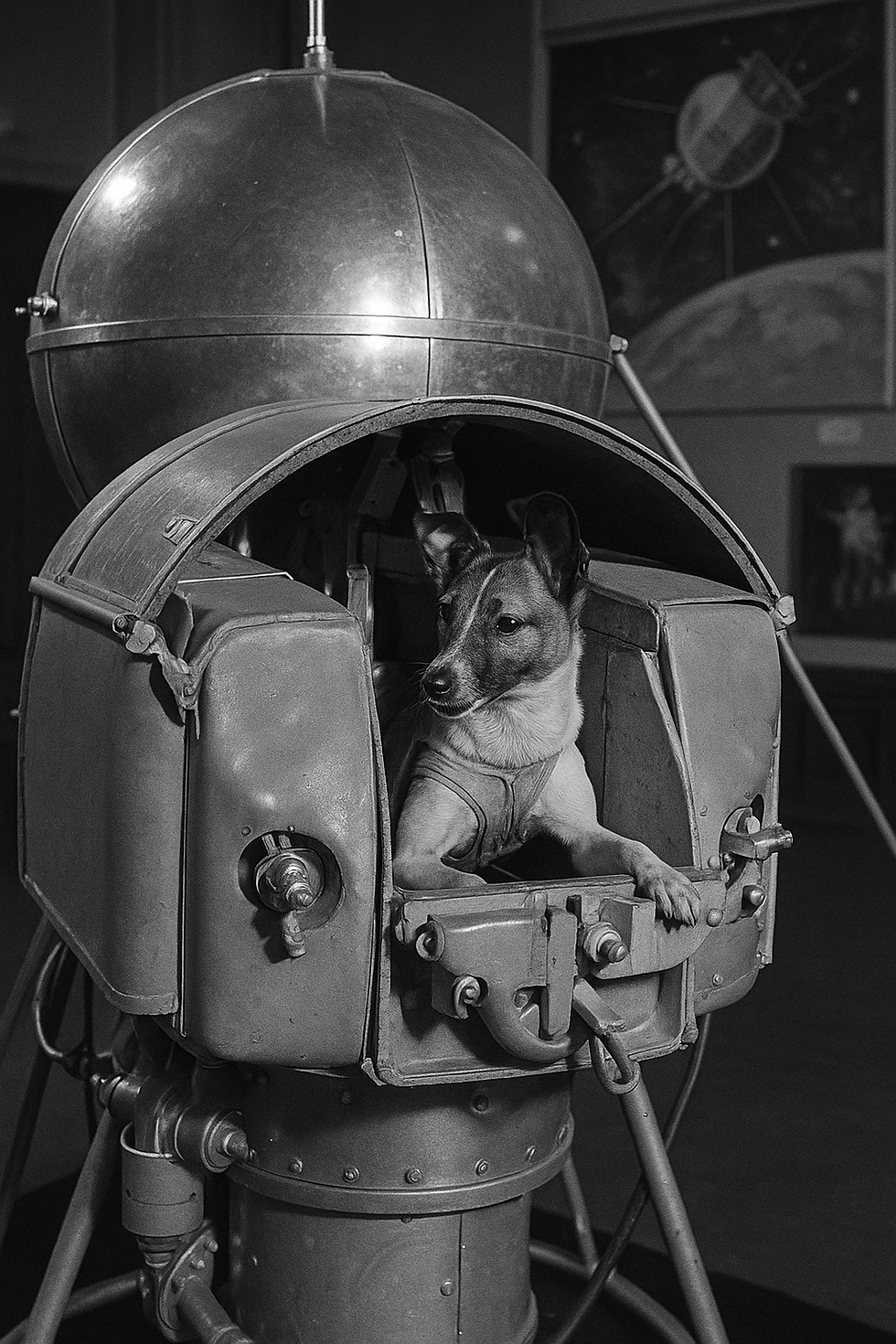Laika (1957). The First Living Soul in Space
- Александр Шамардин

- 7 нояб.
- 2 мин. чтения

On November 7, 1957 — the 40th anniversary of the October Revolution — the world once again looked to the sky. A second Soviet satellite, Sputnik-2, was launched into Earth’s orbit. But this time, it carried more than instruments and metal. Inside the small capsule was a living being — a stray dog from Moscow named Laika. She became the first living creature to leave the planet.
The Race to the Heavens
By late 1957, the space race between the USSR and the United States was accelerating. The launch of the first Sputnik had stunned the world, but Soviet leaders wanted more — proof that life could survive beyond Earth. There were only a few weeks left before the Revolution anniversary, and the new mission had to be ready in time.
Chief designer Sergei Korolev led the project. He knew the truth: the flight would be one-way. Recovery technology didn’t yet exist. The mission’s purpose was to test how a living organism would react to weightlessness, acceleration, and isolation.
The Stray Who Reached the Stars
Laika was found wandering the streets of Moscow. Small, calm, and trusting — she quickly won the scientists’ hearts. Her size and temperament made her ideal for the cramped cabin. The team trained her to endure tight spaces, loud noises, and the vibrations of flight. They called her affectionately “Little Barker” and “the space dog.”
On November 3, 1957, the rocket carrying Sputnik-2 lifted off from the Baikonur Cosmodrome. During launch, Laika’s heart raced, but she remained silent and composed. Ten minutes later, the spacecraft entered orbit. For the first time in history, Earth had sent a living creature into space.
The Hidden Truth
Official reports claimed Laika lived several days and died painlessly. The truth emerged decades later: the cooling system failed, and the cabin overheated to over 40°C (104°F). Laika died within hours of takeoff — alone, in silence.
Many of the scientists involved later expressed regret. One said simply: “We loved her. We should not have hurried.”
Legacy
Despite the tragedy, Sputnik-2 became a milestone in human exploration. Laika’s flight proved that living organisms could endure space conditions — a discovery that paved the way for Gagarin, Tereshkova, and all who followed.
Laika never returned home, but her name lives on as a symbol of courage and sacrifice. Monuments, stamps, and children’s books commemorate the little dog who reached the stars. In 2008, a monument was unveiled in Moscow — a figure of a dog rising atop a rocket.
She did not know she was making history.She simply trusted — and flew.
On November 7, 1957, humanity took its first step into space.But the first to make that step was a dog named Laika.